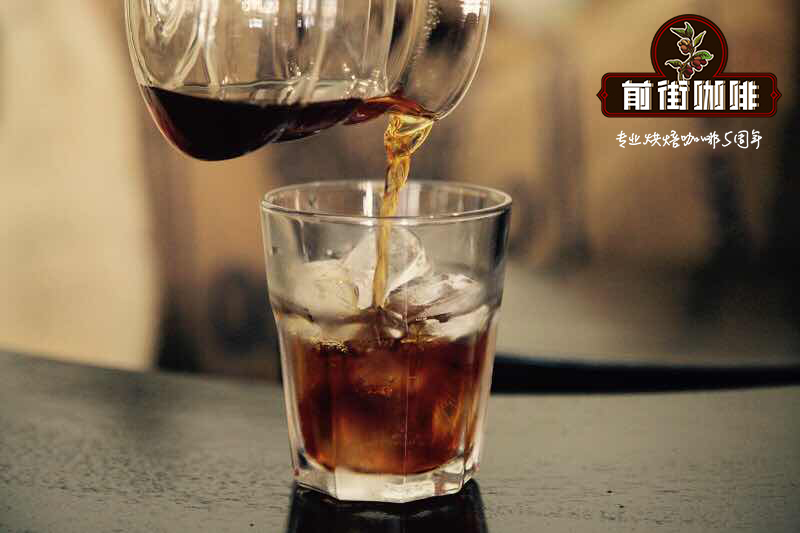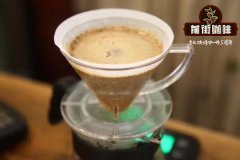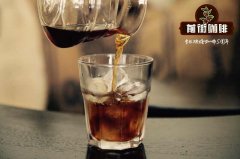Flavor and taste of washed rose summer in San Francisco Manor of Honduras boutique coffee manor

Professional coffee knowledge exchange more coffee bean information please follow the coffee workshop (Wechat official account cafe_style)
Honduras boutique coffee manor bean San Francisco manor washed rose summer flavor and taste?
Producing area: San Francisco Manor
Treatment: washing
Bean seed: Geisha
Altitude: 1500m
Receiving time: 2016.11-2017.2
Project Origin (Plan of Origin) is a boutique coffee raw bean brand established by Mr. Sasa Sestic, founder of Australia ONA Coffee, winner of the 2015 World Barista Competition. Specializing in looking for high-quality raw beans, coffee beans and trading. Through direct cooperation with coffee farmers from coffee producing areas to strengthen communication with local farms, with the acidity of lemonade and medium mellow thickness, this coffee with stone fruit sweet and silky touch is sweet and clean, showing wild rose, white flower, jasmine, white tea, peach, crispy apple, lemongrass and rose perfume.
Honduras has all the environmental factors for producing good coffee: fertile soil, sufficient planting height, excellent microclimate! Just as the western meaning of Honduras is "depth", there are really many high mountains and deep valleys in this country, and coffee is grown in the beautiful conditions of these mountains!
However, the export port of this country is very disadvantageous to the preservation of coffee. The weather is so hot all the year round that raw beans turn white in less than half a month.
Although coffee is now produced in 15 of the country's 18 provinces, and planting is quite common, if the port warehousing problem is not solved, the problem of coffee in Honduras will exist.
Let's first learn about the coffee producing areas of Honduras:
[main producing areas of Honduras]
61 per cent of Honduras coffee produces mountains between 900m and 1200 meters above sea level, while mountains ranging from 1200 to 1600 meters account for 23 per cent of the production area. In fact, just like neighboring Guatemala and El Salvador, Hongguo actually produces a lot of high-quality high-altitude beans!
Honduras has eight major boutique coffee producing areas (the definition of Acer Icafe has changed recently, but there are many versions, as illustrated by the following examples):
(1) San Marcos San Marcos de Colon in Choluteca, (2) La Tigra in Francisco Morazan, (3) Makala Marcala in La Paz, (4) Los Alpes in Siguatepeque, (5) Santa Barbara Santa Barbara, (6) Intibuca, (7) Koban Copan (8) Ocotepeque.
In 2002, I went to Shanbu San Pedro Sula to attend a coffee export party with Koban Coban, and I really saw good Honduras coffee! In 2006, as a judge of Hongguo CoE, I really saw the good coffee in the country. . In Koban and La Paz, Makala Marcala from La Paz in the 2004 National Cup Test Competition in Honduras, 3 of the top 10 are manors from the district! In 2006, Pacamaro, a unique variety from Yoro, won the championship! The following is a description of Hongguo Coffee varieties:
[common coffee species in Honduras]
The varieties of coffee grown in various countries in China and the United States are roughly the same, but countries will also develop different hybrids for planting research. Here are some common coffee varieties in Honduras:
Typica ladder card species-commonly used locally, ar á bigo or criollo, to call typica this species. Typica is highly cultivated and widely grown in the country, up to 12 feet tall. Typica coffee with branches usually at an angle of 60 degrees to the trunk is very good and is widely loved by buyers.
Borbon bourbon species-widely cultivated in high-altitude mountain areas. The branch is at an angle of 45 degrees from the trunk. The newly sprouted coffee leaves are light green. Bourbon species can also be regarded as higher species, which often need pruning and care at the initial stage of planting. At the same time, the planting range of a single plant is larger!
Caturra Katula-native to Brazil, is a variety of bourbon. Katula is a short and dense kind of coffee, which is easy to harvest and take care of. The branch and the trunk also show a 45-degree angle. The leaves are round and shiny! The shape of the fruit is similar to that of bourbon, but the yield per plant is higher, the harvest time is later, and the trunk is more resistant to the wind!
Catuai katay species-also from Brazil. It's a hybrid of Mundo Novo and Caturra. Katai is also a dwarf but taller than Caturra. The branching angle is the same as the leaf shape and Caturra, only the color is lighter.
Maracatu Malakha, a hybrid of Maragogype and Caturra, has a larger bean shape.
Important Notice :
前街咖啡 FrontStreet Coffee has moved to new addredd:
FrontStreet Coffee Address: 315,Donghua East Road,GuangZhou
Tel:020 38364473
- Prev

Coffee beans, male beans, female beans, which one is better? The difference between soybeans and soybeans in coffee how to make cowpea coffee
Professional coffee knowledge exchange more coffee bean information please follow the coffee workshop (Wechat official account cafe_style) what is a public bean? What is a mother bean? Is there a gender difference in coffee? Of course, there is a good explanation for the answer. Let's take a look at why there is such a noun as public bean and mother bean. Before we talk about the mystery of the sex of male beans and female beans, let's first know a few things.
- Next

Honduran coffee growing and improvement programme? Honduras coffee beans export status?
Professional coffee knowledge exchange More coffee bean information Please pay attention to coffee workshop (Weixin Official Accounts cafe_style) Honduras coffee planting and improvement plan? Honduras coffee beans export status? According to the Honduras Las Cafes Bureau (IHCAFE), producers have increased their acreage because of the rise in international bean prices. There are two main factors: (1) coinciding with each
Related
- Detailed explanation of Jadeite planting Land in Panamanian Jadeite Manor introduction to the grading system of Jadeite competitive bidding, Red bid, Green bid and Rose Summer
- Story of Coffee planting in Brenka region of Costa Rica Stonehenge Manor anaerobic heavy honey treatment of flavor mouth
- What's on the barrel of Blue Mountain Coffee beans?
- Can American coffee also pull flowers? How to use hot American style to pull out a good-looking pattern?
- Can you make a cold extract with coffee beans? What is the right proportion for cold-extracted coffee formula?
- Indonesian PWN Gold Mandrine Coffee Origin Features Flavor How to Chong? Mandolin coffee is American.
- A brief introduction to the flavor characteristics of Brazilian yellow bourbon coffee beans
- What is the effect of different water quality on the flavor of cold-extracted coffee? What kind of water is best for brewing coffee?
- Why do you think of Rose Summer whenever you mention Panamanian coffee?
- Introduction to the characteristics of authentic blue mountain coffee bean producing areas? What is the CIB Coffee Authority in Jamaica?

